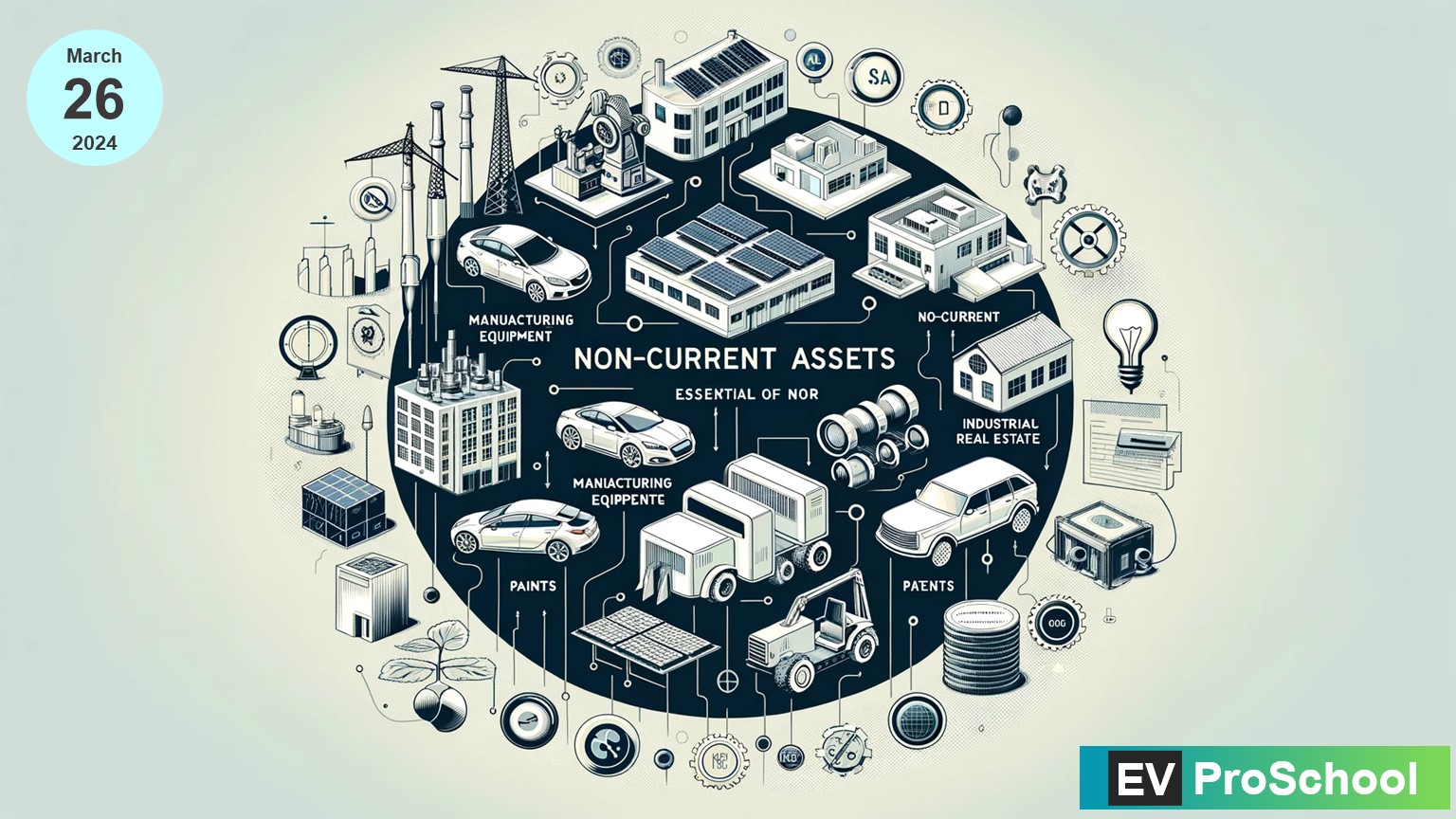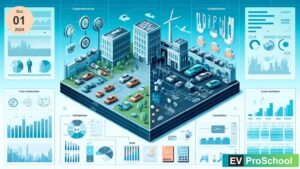The electric vehicle (EV) industry, characterized by rapid innovation and technological advancements, relies heavily on a wide range of non-current assets. These assets, essential for the long-term operations and growth of companies within this sector, vary significantly across different segments of the industry. Let’s delve into the non-current assets critical for battery assembly providers, cell manufacturers, motor suppliers, gearbox suppliers, and controller suppliers, providing insight into the backbone of the EV industry’s production capabilities.
What are Non-Current Assets?
Non-current assets are the backbone of any company’s long-term operations. They’re investments that take more than a year to convert into cash. In the EV industry, this encompasses everything from state-of-the-art manufacturing equipment for battery assembly to sprawling industrial buildings housing production lines. But that’s not all! Patents for innovative technologies and specialized research & development facilities also fall under this category.
Non-Current Assets Across the EV Supply Chain
The EV supply chain is vast, and each segment has its unique set of non-current assets essential for its operations. Here’s a breakdown:
1. Battery Assembly Providers:
- Manufacturing Equipment: Advanced machinery for assembling battery packs.
- Industrial Buildings: Facilities where battery assembly takes place.
- Patents: Intellectual property on innovative assembly techniques.
2. Cell Manufacturers:
- Production Lines: Specialized equipment for cell production.
- Research & Development Facilities: Labs for developing new cell technologies.
- Patents: Intellectual property rights on cell technology.
3. Motor Suppliers:
- Machinery: Equipment for manufacturing electric motors.
- Design Software: High-end software for motor design.
- Patents: Intellectual property on motor design and efficiency improvements.
4. Gearbox Suppliers:
- Tooling and Fixtures: Specialized tools for gearbox manufacturing.
- Testing Equipment: Machinery for rigorous testing of gearboxes.
- Industrial Real Estate: Premises for manufacturing and assembly lines.
5. Controller Suppliers:
- Electronic Manufacturing Equipment: For circuit boards and controller units.
- Software Development Tools: For programming and testing control software.
- Patents: On control algorithms and hardware design.
Overview of Non-Current Assets
| Sector | Manufacturing Equipment | Industrial Buildings/ Real Estate | R&D Facilities | Patents | Design/ Development Tools |
|---|---|---|---|---|---|
| Battery Assembly | Advanced assembly machinery | Assembly plants | – | Assembly techniques | – |
| Cell Manufacturing | Production lines | – | Labs | Cell technology | – |
| Motor Suppliers | Machinery for motor manufacturing | – | – | Motor design and efficiency | High-end design software |
| Gearbox Suppliers | Tooling and fixtures | Manufacturing premises | – | – | Testing equipment |
| Controller Suppliers | Electronic manufacturing equipment | – | – | Control algorithms and hardware design | Software development tools |
A Glimpse into the Future:
The EV industry’s heavy reliance on non-current assets highlights the sector’s long-term vision and the significant investments required. From cutting-edge machinery to groundbreaking intellectual property, these assets are the building blocks for a sustainable electric future. As the EV landscape continues to transform, understanding the role and value of non-current assets will be paramount for stakeholders to thrive in this dynamic market.
By understanding these non-current assets, investors, industry analysts, and consumers can gain valuable insights into the financial health, technological advancements, and long-term prospects of various players in the EV industry.



